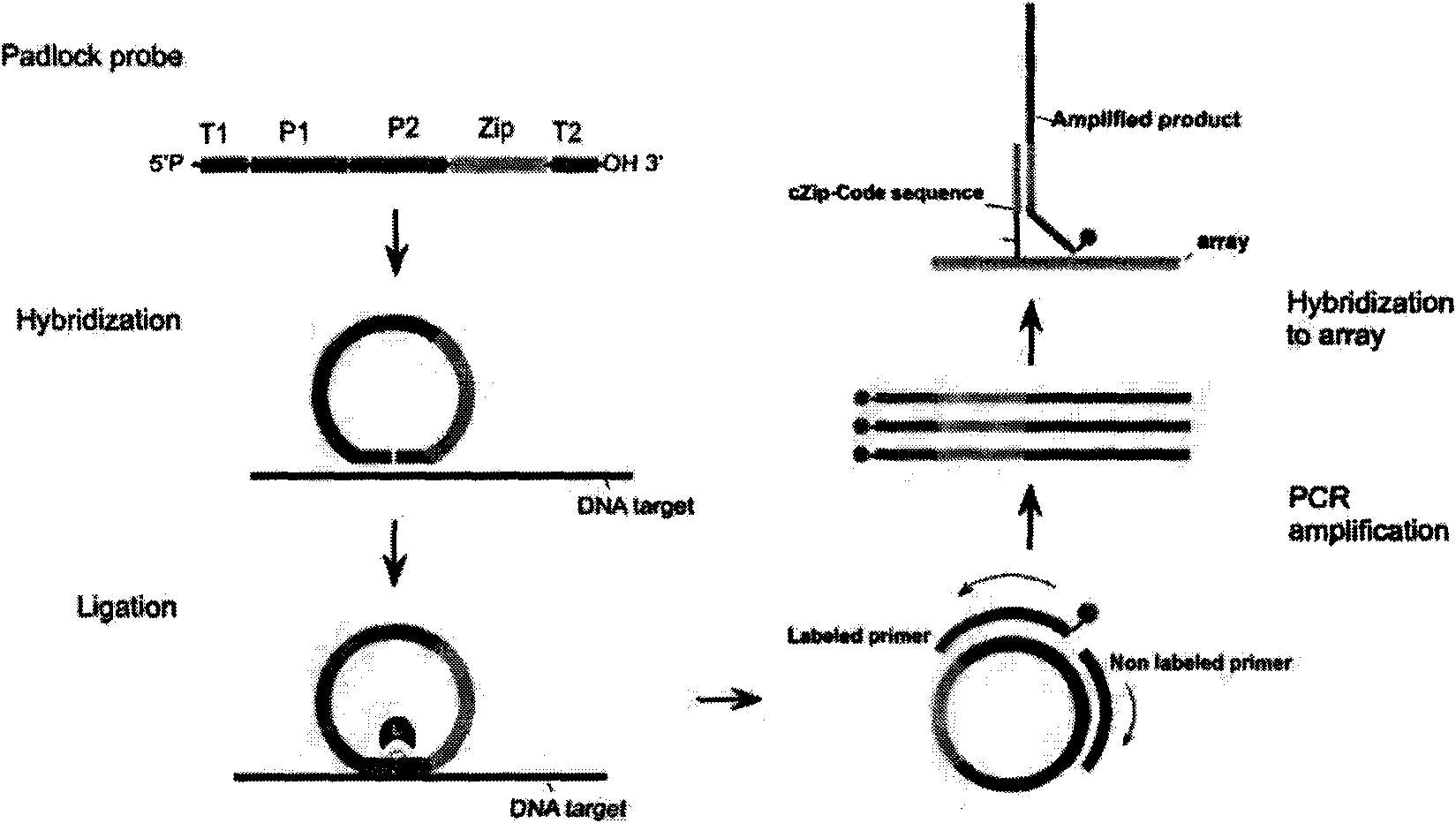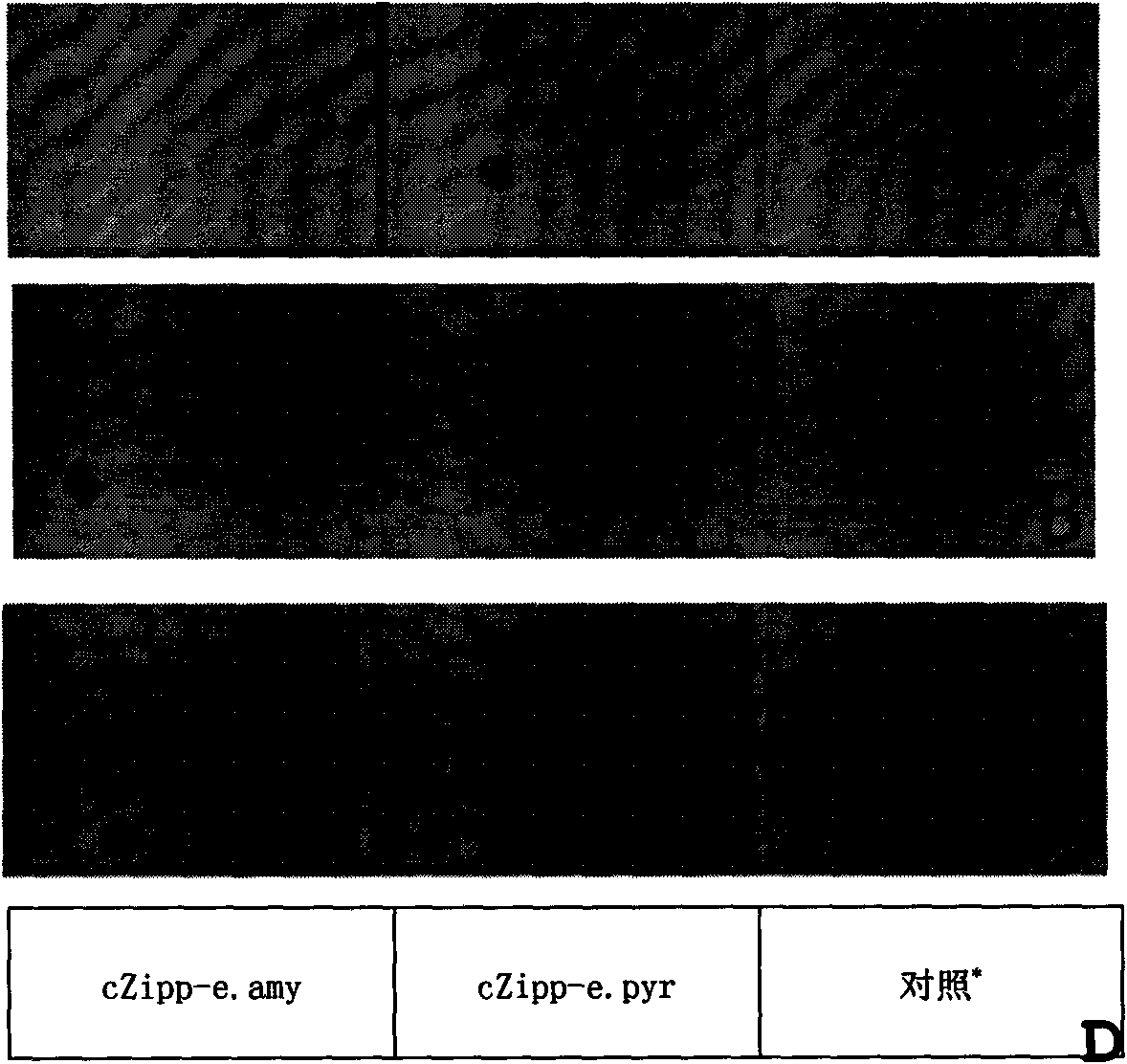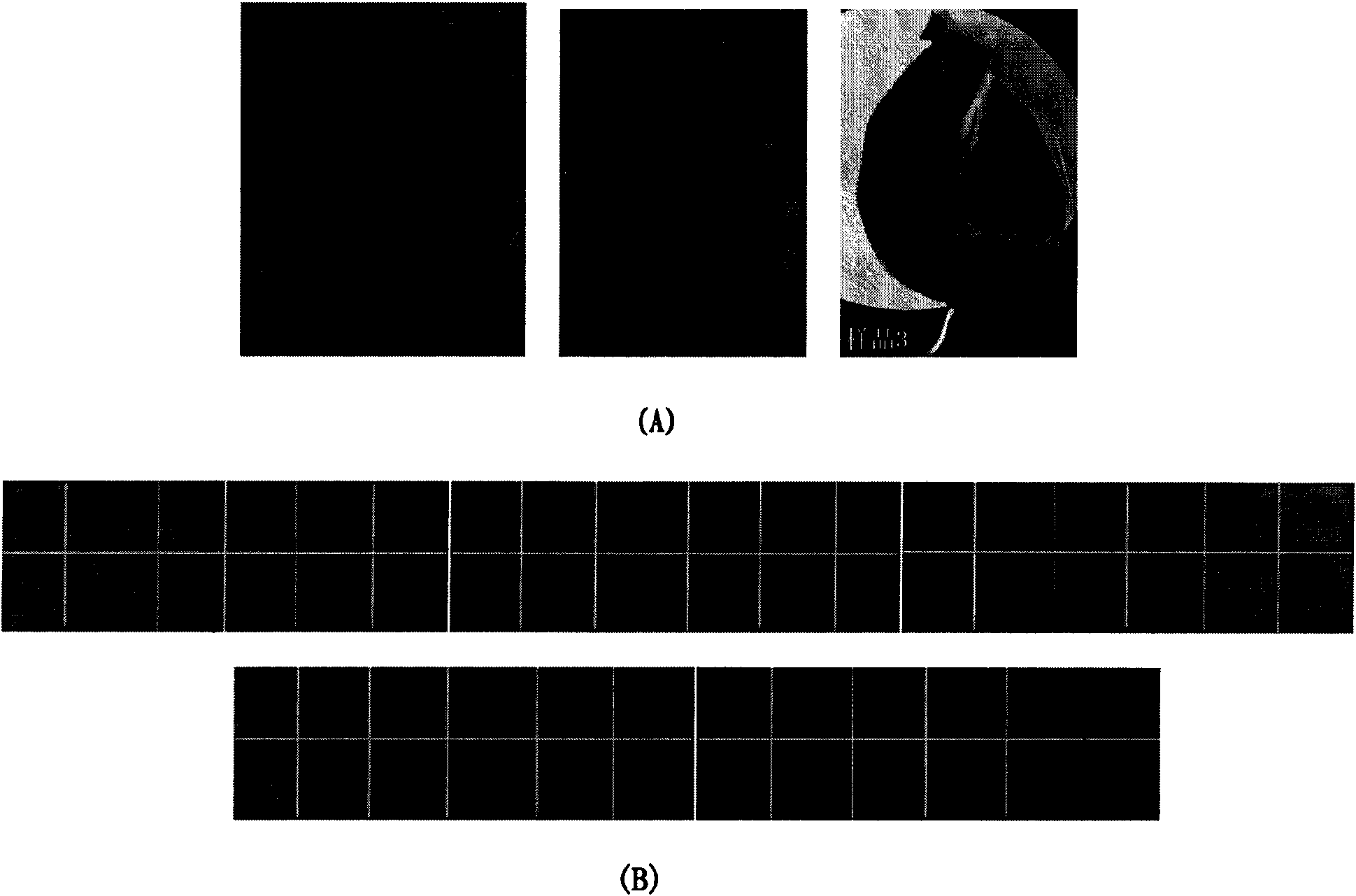Padlock probe for detecting erwinia amylovora and Asian erwinia amylovora and multiple detection method
A kind of technology of E. amylovora bacteria and probe, applied in the biological field, can solve the problems such as difficult to realize multiple detection, and achieve the effects of avoiding false positive phenomenon, strong specificity and reliable detection method
- Summary
- Abstract
- Description
- Claims
- Application Information
AI Technical Summary
Problems solved by technology
Method used
Image
Examples
Embodiment 1
[0039] Example 1: A multiplex detection method using padlock probe combined with Macroaary technology for simultaneous detection of E. amylovora and E. amylovora.
[0040] The padlock probe sequence used to detect E. amylovora:
[0041] P-e.amy: GACTTCGCAGGCGCCTTGCTCATTACTTP I P 2 ATCGGCCTGTAATCGGATCG ACACGGTGTGTCGC
[0042] The padlock probe sequence used to detect E. amylovora:
[0043] P-e.pyr: TATGGCGTCCCCAAGGGGATTCGAACCCP I P 2 CCGACTCTAGGATCGTGGATC ACTTCGTTACCGG
[0044] (1) Disinfect the surface of the infected pear tree leaves and cut them into small sections, then soak them in sterilized water for 30 minutes, centrifuge to get the supernatant, and use the bacterial suspension as a template. Ligation reaction solution includes: 20mM Tris-HCL, pH 9.0, 25mM KCH 3 COO, 10mM Mg(CH 3 COO) 2 , 10mM DTT, 1mM NAD, 0.1% Triton X-100, 2.4U Taq DNA ligase, 1μl bacterial suspension, 100pm probes P-e.amy, P-e.pyr. The ligation reaction program is: pre-denaturation at ...
example 1
[0047] Example 1 detects Phytophthora amylovora and Phytophthora amylovora from the pear blade of artificial inoculation morbidity:
[0048] The padlock detection probes of the above-mentioned E. amylovora and E. asiatica amylovora and their multiple detection methods are used to detect artificially inoculated pear leaves. The methods include:
[0049] 1) Disinfect the surface of the infected pear leaves and chop them up, then soak them in sterilized water for 30 minutes, centrifuge to get the supernatant, and use the bacterial suspension as a template.
[0050] 2) Referring to the above technical scheme, use padlock detection probes P-e.amy and P-e.pyr in combination with Macroaary to detect samples. See the test results image 3 . It is proved that the above technical scheme can be applied to the actual detection of E. amylovora and E. amylovora.
PUM
 Login to View More
Login to View More Abstract
Description
Claims
Application Information
 Login to View More
Login to View More - R&D
- Intellectual Property
- Life Sciences
- Materials
- Tech Scout
- Unparalleled Data Quality
- Higher Quality Content
- 60% Fewer Hallucinations
Browse by: Latest US Patents, China's latest patents, Technical Efficacy Thesaurus, Application Domain, Technology Topic, Popular Technical Reports.
© 2025 PatSnap. All rights reserved.Legal|Privacy policy|Modern Slavery Act Transparency Statement|Sitemap|About US| Contact US: help@patsnap.com



